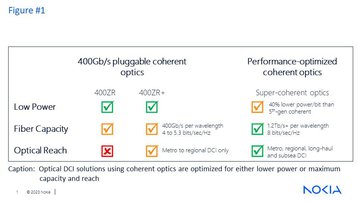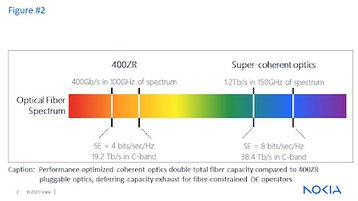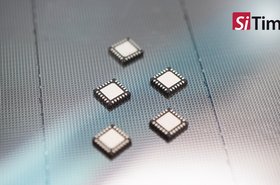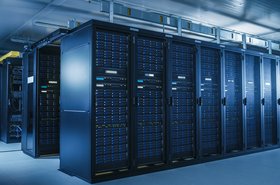With the ever-accelerating digitization of our economies and societies, data centers have become the lynchpin infrastructure that delivers the services and applications we all depend on.
These data centers must, in turn, interconnect to each other as well as to internet exchanges and peering points to provide seamless and reliable global connectivity.
Enabling this are optical data center interconnect (DCI) solutions that utilize coherent optics to leverage the enormous data-carrying potential of optical fiber, and help connect disparate data centers across metro, regional, and inter-continental distances.
The two most common evolution challenges faced by data center operators are maximizing the capacity of their optical DCI connections, while also managing power consumption.
An example of the increasing interconnect bandwidth needed comes from a C&C Technology Group report, which documented that from 2010 to 2018, global IP traffic increased 10 times, while data center storage capacity grew by 25 times.
Data center interconnection capacities continue to scale significantly, driven by increasing data center virtualization, the shift from on-premise to cloud-delivered enterprise services and applications, and the growth of AI and ML workloads that drastically increase compute and connectivity requirements.
Additionally, managing power consumption is also a key requirement for DC operators. In the US market alone, DC power consumption is expected to reach 35 gigawatts (GW) by 2030, up from 17 GW in 2022, according to an analysis by McKinsey.
To keep pace with this growth, operators need to deploy solutions that can significantly scale DCI capacity, while simultaneously reducing power per bit (Watts) needed to deliver a given capacity transmitted over fiber and overall network power consumption.
Maximizing capacity
To maximize capacity means to increase the spectral efficiency (SE) of coherent optics, defined as the amount of data that can be transmitted into a given amount of optical fiber spectrum. The more bits transmitted in a given amount of spectrum, or the less spectrum used for a given number of bits, the higher the SE.
Recently, two new advances in coherent optics are helping operators solve these challenges and scale their DC interconnections, each having a different focus; either minimizing power consumption or maximizing fiber capacity (summarized in Figure 1).
On one hand, are pluggable coherent optics such as 400ZR implemented in QSFP-DD transceiver modules that can be directly equipped in 400 Gigabit Ethernet (GE) router ports.
These typically consume 15-20 Watts of power and enable optical DCI at speeds of 400 Gigabits per second (Gbps) per wavelength across metro distances up to 80-100km. These are complemented by 400ZR+ optics, which allow greater reach up to several hundreds of kilometers, albeit at the expense of slightly higher power consumption of up to 25W.
Super-coherent optics
Another solution for optical DCI applications is high-performance coherent optics, or super-coherent optics. These operate at speeds of up to 1.2 Terabits per second (Tbps) per wavelength or more, they maximize the SE of optical DCI links, extend optical DCI connectivity across long-haul and inter-continental distances, and reduce power per bit by 40 percent compared to prior generations of high-performance coherent optics.
Performance-optimized coherent optics achieve this by implementing sophisticated algorithms including probabilistic constellation shaping (PCS) and high-gain forward error correction (FEC), which allows more bits to be transmitted in a given amount of spectrum, over significantly greater distances of up to several thousands of kilometers, to enable optical DCI across long-haul and subsea spans.
The advantage of performance-optimized optics can be seen in their capacity-reach capabilities. For example, they can transmit up to 1.2Tbps of data over 100km using only 150 GigaHertz (GHz) of fiber spectrum, while 400ZR optics transmit 400Gbps over the same distance using up to 100GHz of spectrum.
Thus, high-performance optics can double the spectral efficiency and capacity of fiber links compared to 400ZR/ZR+ optics (see Figure 2). Conversely, performance-optimized optics can transmit 400Gbps of data over 4000km or more, or 800Gbps up to 2000km, compared to 400ZR+ optics that in typical applications only reach 500-750km at 400Gbps speeds.
DC operators should therefore carefully consider the characteristics of their optical DCI connection requirements to deploy the optimal solution for their needs.
In some cases, 400ZR/ZR+ pluggable optics can enable important reductions in network power consumption by removing the need for separate, stand-alone optical transport systems.
However, these benefits are limited to optical DCI links spanning metro and regional distances, and for operators having either low capacity requirements or who have large quantities of optical fibers deployed between data centers.
For DC operators who either lease fibers and/or have limited fiber deployed between data centers, and must nevertheless connect large capacities between data centers, high-performance coherent optics used – instead of 400ZR – can double their fiber capacity before additional costs for more fibers are incurred.
When optical DCI connections extend beyond a few hundred kilometers, performance-optimized coherent optics can provide scalable connectivity between DCs separated by hundreds or thousands of kilometers.
Very importantly, performance-optimized coherent optics can also support 800Gbps interconnections over practically any distance, providing support for the latest router upgrades to 800GE port speeds.
Data center operators can benefit from new advances in coherent optics to evolve their DCI links in a manner best suited to their constraints and priorities. Pluggable optics such as 400ZR/ZR+ provide an ideal solution for reducing power consumption across short-distance DCI links having plenty of fibers between sites.
In contrast, performance-optimized coherent optics push the capacity-reach limits to double DCI fiber capacity for the same distance, or enable interconnections between data centers across virtually any distance, while also enabling DCI solutions that support new router port speeds of 800GE.








